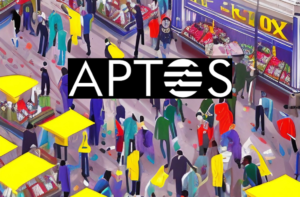Celer Network Price Prediction 2023-2032
- Celer Network Price Prediction 2023 – up to $0.021
- Celer Network Price Prediction 2026 – up to $0.073
- Celer Network Price Prediction 2029 – up to $0.23
- Celer Network Price Prediction 2032 – up to $0.67
Celer Network has shown that it can make a decentralized, off-chain scaling platform with strong security properties. The project comes from several Stanford researchers and is backed by venture capital firms like FBG Capital, Global Brain, Zhenfund, and DFund.
Celer Network crypto has proven to be a profitable investment for those who joined in the early stages of the token, with a massive ROI. Celer is the future of Esports and MicroPayments on Ethereum Layer 2; think Matic but is it better?
Take a look at what’s currently happening:
🚀Excited to see Celer-bridged ERC20 assets on @EvmosOrg now successfully converted to IBC tokens!
— CelerNetwork (@CelerNetwork) March 3, 2023
🌉Users can now transfer Celer-bridged tokens across the @cosmos ecosystem!
🌈A huge thank you to @swiss_staking for leading the registration. https://t.co/D5F0uOnGsv pic.twitter.com/kbJ0m9llhF
We’ll look at past Celer Network (CELR) pricing and see what experts have to say about its price movements in the future. Remember that these predictions should be taken just as some market experts/analysts suggest.
How much is CELR worth?
Today’s Celer Network price is $0.01513 with a 24-hour trading volume of $2,754,727. Celer Network is down 0.47% in the last 24 hours. The current CoinMarketCap ranking is #180, with a live market cap of $115,291,744. It has a circulating supply of 7,592,840,545 CELR coins and a max. supply of 10,000,000,000 CELR.
Celer Network price analysis: CELR’s price soars as bulls aim for another breakout
TL; DR Breakdown
- CELR price analysis shows that the coin continues to trade between $0.01348 to $0.01841
- Resistance for CELR is present at $0.01614
- Support for CELR/USD is present at $0.01482
On July 13th, the price analysis of CELR indicates that the bulls were successful in maintaining an upward trend in the price chart, resulting in a rise to $0.01600. Presently, CELR can either surpass the critical level at $0.01614 or undergo a reversal toward $0.01482.
CELR price analysis 1-day chart: CELR Price Consolidates in Wide Range, Breakout Potential Looms
Analyzing the daily price chart of Celer Network, CELR’s price has witnessed a minor uptrend today as the bulls pushed the price towards $0.01614. The daily chart also shows that CELR has been consolidating within a wide range ($0.01348 to $0.01841) since June 11, 2023. A breakout above the $0.01614 region could cause Celer to retest the daily resistance at $0.01841. CELR’s price is currently trading at $0.01571, increasing over 1.6% in the last 24 hours.
The RSI-14 trend line is slightly above 45, indicating that the market is currently in a neutral state characterized by minimal volatility. At the same time, the MACD line is giving a bearish signal, suggesting a potential downward movement for CELR, possibly reaching a target of $0.01482.
CELR/USD 4-hour price chart: Bulls Take Charge as Price Surges Towards $0.01606
Based on the 4-hour Celer Network price chart, it is evident that bulls are currently in control and driving the price of CELR. The price has experienced a significant surge, approaching the level of $0.01606.
The BoP indicator is currently positioned in a positive region, with a value of 1, indicating that buyers are currently dominating the market. Additionally, the MACD trend line has formed bullish candles above the signal line, providing further support to the upward momentum of the coin.
Also Read:
- Celer Network suffers probable DNS hijack of cBridge frontend
- Celer Network going ahead with the release of cBridge mainnet
Celer Network Price Prediction 2023-2032
Price Prediction by Cryptopolitan
Although Celer Network (CELR) has demonstrated satisfactory performance in 2023, yielding approximately 60% gains. Can Celer Network attain a $1 price point in the near future? To gain better insights into the potential future value of CELR, it would be valuable to consider our price predictions spanning from 2023 to 2032.
| Year | Minimum Price ($) | Average Price ($) | Maximum Price ($) |
| 2023 | 0.019 | 0.019 | 0.021 |
| 2024 | 0.028 | 0.029 | 0.034 |
| 2025 | 0.041 | 0.042 | 0.050 |
| 2026 | 0.060 | 0.062 | 0.073 |
| 2027 | 0.09 | 0.09 | 0.10 |
| 2028 | 0.13 | 0.13 | 0.16 |
| 2029 | 0.19 | 0.20 | 0.23 |
| 2030 | 0.26 | 0.27 | 0.33 |
| 2031 | 0.40 | 0.41 | 0.47 |
| 2032 | 0.57 | 0.58 | 0.67 |
Celer Network (CELR) Price Prediction 2023
According to the 2023 price forecast for Celer Network (CELR), there is a possibility for the maximum price of CELR to reach $0.021, assuming there is a consistent demand for the token. Conversely, the minimum price is anticipated to be $0.019. On average, it is estimated that the trading price for CELR will hover around $0.019.
Celer Network Price Prediction 2024
Our price prediction for Celer Network (CELR) in 2024 suggests that the upward trajectory of the token will persist, potentially reaching a maximum value of $0.034. Furthermore, we anticipate the average price to be approximately $0.029, while the minimum valuation is projected to be $0.028.
Celer Network (CELR) Price Prediction 2025
The Celer Network forecast for 2025 suggests that CELR could potentially reach a maximum value of $0.050. Additionally, the projected minimum price for the coin is estimated to be approximately $0.041, while the average market value could hover around $0.042.
Celer Network Price Prediction 2026
According to our Celer price prediction for 2026, there is a possibility for the coin’s value to reach a maximum of $0.073, while the projected minimum price is anticipated to be $0.060. The average trading price for the year is estimated to be approximately $0.062.
Celer Network Price Prediction 2027
There is a strong expectation for a significant surge in the value of CELR in 2027. It is projected that the coin could potentially reach a maximum price of $0.10. Additionally, the average trading price for the year is predicted to hover around $0.090, with a projected minimum price of $0.087.
Celer Network Price Prediction 2028
Our Celer Network price prediction for 2028 suggests that CELR will reach a maximum value of $0.16. The average trading price for the coin throughout the year is estimated to be approximately $0.13, while the minimum price is also expected to be $0.13.
Celer Network Price Prediction 2029
Our Celer Network price forecast for 2029 indicates that the coin is expected to have an average trading price of $0.20. There is potential for the the price of celer network to reach a maximum of $0.23, while the projected minimum price is around $0.19.
Celer Network Price Prediction 2030
Our analysis of the technical analysis of Celer Network’s price performance suggests that there is a possibility for CELR to reach a maximum value of $0.33 in 2030. Furthermore, we project that the coin will maintain a minimum trading price of $0.26, while the average price is expected to hover around $0.27.
Celer Network Price Prediction 2031
Our forecast for the Celer Network’s price in 2031 suggests that the cryptocurrency is likely to experience notable price fluctuations. There is a potential for the coin to reach a minimum value of $0.40 and a maximum value of $0.47. On average, we anticipate that the coin will trade at around $0.41.
Celer Network Price Prediction 2032
According to our Celer Network price prediction for 2032, there is a possibility for the coin to achieve a maximum value of $0.67. The average projected price for CELR in 2032 is estimated to be around $0.58, while the minimum expected value is anticipated to be $0.57.
Note that these price predictions are solely estimates and should not be considered investment advice. It is highly recommended to conduct comprehensive research and analysis, taking into account market conditions and other relevant factors, before making any investment decisions.
Celer Network Network Price Prediction by Wallet Investor
Wallet Investor’s analysis of the cryptocurrency market and their algorithm for predicting future prices suggests that Celer Network (CELR) may not be a favorable long-term investment. Their findings indicate a potentially significant decrease in CELR’s value, with a projected drop of approximately -88.47% by 2024. If the predicted trend is actualized, CELR’s current price, could plummet to around 0.00174 USD.
Celer Network Network price forecast by Technewleader
Technewleader’s analysis indicates that Celer Network (CELR) is poised for significant price growth in the upcoming years. By the end of 2023, the projected upper limit for CELR’s price stands at $0.021. In 2024, the forecast suggests a price range spanning from $0.026 to $0.032.
Looking ahead, Technewleader predicts a minimum average price of $0.074 and a maximum of $0.089 for CELR in 2027. Assuming the current upward trend persists, the maximum average price of CELR could potentially reach $0.19 by 2029. By 2032, Technewleader envisions a price range of $0.50 to $0.58 for CELR.
Celer Network Price Prediction by Digitalcoinprice
Digitalcoinprice’s analysis paints an optimistic future outlook for Celer Network (CELR), with significant growth predictions. It is projected that by the end of 2023, CELR could potentially reach a maximum price of $0.0331, indicating a promising trajectory for the cryptocurrency.
Looking ahead to 2027, Celer Network (CELR) is anticipated to have a price range that could reach as high as $0.0683, suggesting a notable increase in value. Taking a longer-term perspective, the team’s predictions extend to 2032, where they foresee the average price of CELR potentially reaching $0.29, with a maximum value of $0.30.
Celer Network Price Prediction By Industry Experts
Moon333 analyzes the price movement of Celer Network, its recent breakout of the resistance level, and its current movement within a rising channel. The target to the upside is around 0.046 USD, and if there are further upsides, prices could go as high as 0.20 USD.
Celer Network Overview
Celer Network is a layer-2 scaling platform built on top of the Ethereum blockchain. It aims to enable fast, low-cost, and secure off-chain transactions for decentralized applications (dApps). By utilizing off-chain techniques like state channels and sidechains, Celer Network significantly improves the scalability of Ethereum without sacrificing decentralization.
Celer Network’s native token, CELR, incentivizes network participants and ensures efficient routing of off-chain payments. Overall, Celer Network is poised to play a crucial role in solving the scalability challenges faced by blockchain networks. Since attaining an all-time high of $0.1987 in September 2021, CELR’s market value has declined by up to 92.4% in 2023.
The Celer Network analytics in the past year shows that about 53% of users on the network own between $1000 to $100,000, 43% own between $0-1000, while 4.13% of wallet addresses hold over $100,000 worth of CELR. Additionally, whale holdings account for 82.1% of the token’s circulating supply.
Celer Network Price History
Celer Network (CELR) was launched in March 2019 with an initial trading price of around $0.02. However, the token’s price declined shortly after its launch, falling to approximately $0.007 by May. It experienced some ups and downs throughout the year, ultimately ending 2019 at $0.004, representing an 85% loss from its initial price.
In 2020, CELR saw a brief surge in February but quickly declined, hitting a low of $0.0009 in March. From there, the token gradually recovered and ended June at $0.004. It rallied in July and August, peaking at $0.014, but fell again in September, reaching a low of $0.003 by November. By the end of 2020, CELR was worth around half a cent.
In January 2021, CELR doubled in price and reached over $0.02 in February. The growth continued, leading to an all-time high of $0.10 in March. However, prices sharply retreated in April, reaching a low of $0.04. The token attempted a rebound in May but faced volatility, ultimately closing 2021 at $0.075.
In January 2022, CELR briefly attempted to reach $0.1 but fell short, trading below $0.02 in March. It broke past the $0.02 resistance in July 2022, reaching $0.027 in August, and consolidated within the $0.01 to $0.02 range for the rest of the year.
In 2023, CELR opened at $0.0095, reached a high of $0.0282 in April, and experienced a reversal, reaching $0.0137 on June 12. At the time of writing, CELR is trading at $0.01513, reflecting a 57.49% price gain year-to-date.
Celer Network Recent News/Opinions
Celer Network Enables Seamless Bridging of $AURA and $USDC with Aura Network on BNBCHAIN
🤩Celer is thrilled to announce our bridging support for the @AuraNetworkHQ!
— CelerNetwork (@CelerNetwork) June 27, 2023
🌉Users are now able to bridge $AURA and $USDC between Aura and @BNBCHAIN quickly, securely, and with low costs!
💻For more details check out our blog post⬇️https://t.co/jjUzgzaMeW
More on the Celer Network (CELR) Ecosystem
What is Celer?
Celer Network is a second-layer, off-chain scaling platform. It is designed to address blockchains’ scalability trilemma by offering strong security guarantees, low development costs, and high performance. The network consists of both an off-chain operating network and various developer tools:
- CelerX: An SDK for trustless off-chain dApps.
- Celer SDK: A high-level abstraction layer that allows developers to build scalable, secure, and privacy-preserving decentralized applications (dApps).
- Channel transfers: Enables bi-directional off-chain of digital assets without any settlement delay.
Unlike most scaling projects that address scalability through sharding or Layer 2 techniques, Celer Network is designed to solve the problem differently. The project uses a layered architecture that separates state channel logic from off-chain operating networks and smart contract processing.
Celer Network was developed by researchers at Stanford, UC Berkeley, and Princeton, working on layer two infrastructure for blockchains. They have gone beyond theoretical research and built working prototypes of their models – the first implementation was developed as early as 2016 when it was used to solve a privacy layer on Ethereum.
An off-chain scaling solution is necessary because today’s blockchains are slow and expensive. For example, a simple payment from A to B in a dApp can require up to 22 blockchain confirmations (~30 minutes) and cost over $1 when using the Ethereum mainnet.
The Celer Network Architecture
The Celer Network architecture (cStack) is built on four elements:
- ccOS: The core of the network that provides the workflow.
- cRoute: A mechanism that increases operations capacity by streamlining routes within the network.
- cChannel: Channels for transmitting transactions within the network.
- cApps: An ecosystem application layer used for scaling and user privacy.
The platform uses a Proof-of-Stake (PoS) consensus variation called Delegated Proof of Stake (DPoS). With this algorithm, participants may stake their coins for a reward while transferring the responsibility of validating transactions to “delegates.”
CELR holders will provide tokens for liquidity and will receive a reward for doing so. The key point of Celer is that the platform allows layer-2 scaling for any blockchain. Thus, the project covers a wide spectrum of the market, multiplies the liquidity potential, and increases the product’s reliability, coverage, and adaptation.
Who Created The Celer Network?
Celer Network was founded in 2018 by a strong team of engineers with incredibly technical and specialized experience. All four co-founders of Celer hold PhDs in Computer Science from universities like MIT and UC Berkeley, and all have a work history with high-profile tech companies.
- Dr. Mo Dong is a bonified expert in applying algorithmic game theory and protocol development. He also teaches comprehensive courses on smart contracts. He previously worked as a development engineer and product manager at Veriflow.
- Dr. Junda Liu graduated from UC Berkeley and worked with Google in 2011 to create the infrastructure for their data center. In 2014, he became one of the founders of the Project Fi mobile service. After that, he took the position of technical manager at Android Tech.
- Dr. Xiaozhou Li received his education at Princeton. Li interned at Microsoft before working at Barefoot Networks as a software engineer. Today, his published and widely-read academic works span distributed systems, networks, storage, and data management.
- Dr. Qingkai Liang holds a degree from MIT. As a software engineering intern, he has worked for the MIT Laboratory for Information and Decision Systems (LIDS), Bell Labs, and Google. His research focuses on learning and controlling problems in networked systems, namely online learning algorithms in adversarial networks.
What makes Celer Network (CELR) unique?
Celer is a networked system and not a separate blockchain. The platform instead runs on top of existing and future blockchains. The developers focused on scalability to improve the throughput of crypto blockchains. The founders are confident that in-house solutions will not bring results to future decentralized blockchains (globally). Instead, they propose to solve the problem with their off-chain platform.
The four levels of the cStack architecture are evenly partitioned to provide several unique benefits. The advantages include reduced transaction delays, decreased commission for micropayments; zero commission in working off-chain smart contracts; horizontal scaling in joining new nodes; availability of an off-chain model of cryptoeconomics; an optimal routing algorithm for transactions; and support for various blockchains.
The cEconomy is a unique crypto-economic model responsible for maintaining stable liquidity and availability for the ecosystem while creating a network effect. The mining algorithm doesn’t require the use of Proof-of-Work (PoW). Users only need to install the software and keep CELR in their accounts to receive income as a reward for providing liquidity.
How many CELR are in circulation?
CELR has a maximum supply of 10 billion tokens, which is distributed as follows: 25% – PoLC mining reward and Off-chain ecosystem building; 20% – Team (18.3%) and Advisors (1.7%); 17% – Foundation; 5% – Marketing & Ecosystem; 33% – Sale.
CELR is an ERC-20 standard token built upon the Ethereum blockchain. It’s used to manage the network economy – cEconomy and has several uses:
- Paying commission fees for service and transactions to off-chain providers and covering additional costs.
- Staking CELR in the State Guardian Network (SGN) and acquiring the status of State Guardian. State Guardians have access to status monitoring, respond to disputes, and provide security and network efficiency.
- CELR tokens maintain a large liquidity pool in a Proof of Liquidity Commitment (PoLC) process.
- CELR tokens can be useful in a Liquidity Backing Auction (LiBA) to increase the priority of applications for liquidity support and, as a consequence, increase the payment of interest on liquidity.
How Is the Celer network secured?
The SGN (State Guardian Network) is a decentralized L2 service infrastructure that keeps the Celer L2 platform running smoothly. It securely stores the user state on the Celer State Channel Network and responds to L1 calculations when users are offline. Moreover, the technology allows users to protect their savings before going offline. SGN also acts as a decentralized block producer level for the Celer Rollup, thus maintaining a high level of viability and providing additional security. Users are required to stake CELR to join the SGN. And CELR holders facilitate the protection of the network as a whole.
Where can you buy CELR?
The top exchanges for Celer Network (CELR) trading are currently Binance, Gate.io, Bithumb, OKEx, Crypto.com Exchange, WazirX, AscendEX, (Bitmax), CoinDCX, MXC.com, BitPay, DigiFinex, BKEX, AEX, BiKi, Hotbit, HitBTC, TOKOK, Uniswap V2, TOCENCAN, DragonEX, ZT.
In March 2019, CELR tokens were sold on the IEO platform, Binance Launchpad. As of June 2021, the most liquid trade pairs for CELR on Binance are CELR/USDT, CELR/BTC, CELR/BUSD, and CELR/BNB.
How does Celer work?
Celer Network contains two main components: an off-chain operating network and developer tools. The Ethereum blockchain powers them through smart contracts (Economic) and cTokens (Gas). The platform is blockchain agnostic; it will start with integration for Ethereum, but additional blockchains can be added later.
The Celer Network platform is maintained and supported by the Celer team. The project’s goal is to be decentralized as much as possible so that third parties can maintain specific components or upgrade them without disrupting service delivery.
CelerX: An SDK for trustless off-chain dApps
Most blockchain applications require users to sign transactions to prove they have permission for specific actions. For example, when Alice wants to send 1 Ether from an A account, she needs to ask for B and have B send her an authorization token in signed data. After that, Alice can use the Ethereum network’s proof-of-work algorithm to secure funds transfer.
A transaction on the Ethereum blockchain specifies that Alice has permission to withdraw 1 Ether from account A.
- This introduces several challenges:
- The process is slow and expensive (it requires paying gas fees and waiting for multiple confirmations).
- The signing process is complex, requiring expensive development time due to security reasons.
- The platform can be limited by architecture – for example, when Alice wants to use the same token on another blockchain, she has to redeploy it there, which introduces even more challenges.
Celer Network solves these problems through off-chain transactions. Users sign a transaction off-chain that represents the intention of withdrawal. This proposal is then submitted to the operating network, where it’s put on hold until the transaction is completed (i.e., funds are sent).
The Celer network architecture shows two types of settlement transactions. The first one sends 1 Ether from A account to B account; settlement costs $5 and takes ~10 minutes due to blockchain confirmations. The second transaction sends 1 Ether from A to B, the accommodation cost is $0.5, and it takes ~1 minute.
People are waiting for A and B, a simplified example of off-chain transactions on top of Celer Network for sending funds between two parties. After creating a payment channel, Alice signs a transaction authorizing the withdrawal of 1 Ether from account A and sends it to Celer Network.
The amount is then locked in an escrow contract valid for the next 24 hours; the funds will be made available once Alice and Bob send their authorization tokens (signed data). After both parties sign a revocation transaction, which enables refunding of all funds in the channel to their initial state, they can make a withdrawal from the track.
Conclusion
Numerous developments back Celer Network. But its long-term price prediction is somewhat contradictory. Wallet Investor predicts it is a bad investment, while other experts say investors stand a chance to benefit from the project if they hold it long-term. Even though we predict this cryptocurrency is a good investment, we advise investors to do their own research before investing in this token.
The Celer Network company is not the only one that specializes in level-2 scaling solutions. Regardless of the organization’s pricing projection, the job CELR accomplishes is crucial. Still, before choosing whether CELR is the best option, observing other, somewhat dissimilar systems to see how they are performing and acting would be useful.
The cost of Celer Network will rise in the future! By 2026, Celer Network is anticipated to surpass the $0.06 threshold, according to our price prediction! The market capitalization of Celer Network will rise in the future as its worth rises.
Future growth is contingent on various factors, including announcements, new technology solutions generated by Celer Network activities, the crypto ecosystem in general, legal status, and so on. As a result, we’d advise you to do your homework before investing in any cryptocurrency.





